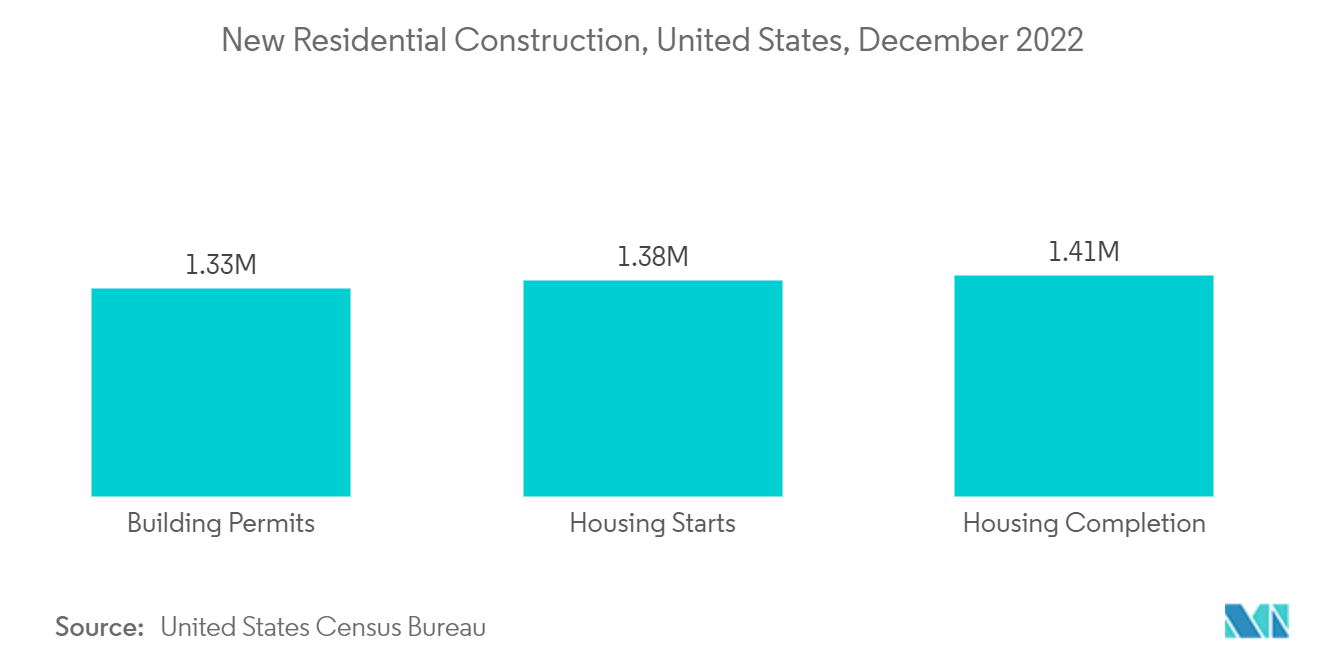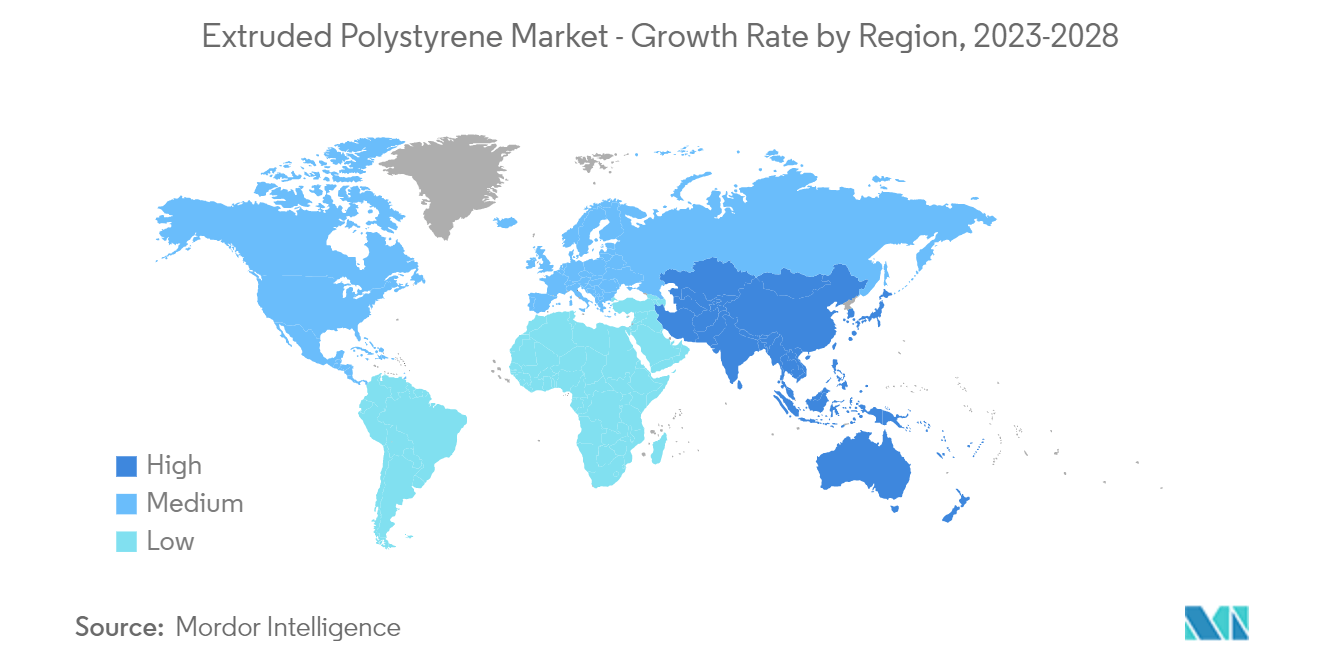Market Trends of Extruded Polystyrene Industry
This section covers the major market trends shaping the Extruded Polystyrene Market according to our research experts:
Increasing Demand from the Residential Segment
- Extruded polystyrene (XPS) is a thermoplastic polymer with a closed-cell structure. It is considerably stronger with higher mechanical performance but is more expensive than its close substitute, expanded polystyrene (EPS).
- Extruded polystyrene is often used in the form of rigid foam to insulate floors, roofs, walls, ceilings, and balconies in residential buildings. This is because of its high compressive strength and resistance to moisture.
- Furthermore, extruded polystyrene is most widely used in the insulation of green buildings owing to its ability to reduce energy consumption by 6-8% and also to reduce greenhouse gas emissions, namely carbon dioxide and methane.
- In India, 114.06 lakh houses have been sanctioned under the Pradhan Mantri Awas Yojana-Urban (PMAY-U) until November 2021.Out of these, 89.36 lakh houses have been grounded for construction, of which 52.55 lakh houses have been completed or delivered by November 2021.
- Moreover, under PMAY-G, the scheme of "Housing for All" by 2024 has been set at 2.95 crore houses, out of which 2,62,34,163 households have already been allocated to the states and UTs from 2016-17 until 2021-22. A total of 2,17,54,812 houses have been sanctioned to the beneficiaries, and 1,71,34,737 houses have been completed as of February 2, 2022.
- Furthermore, according to the United States Census Bureau, an estimated 1,392,300 housing units were completed in 2022, representing an increase of 3.8 percent compared to the 2021 figure of 1,341,000.
- Because of all the things listed above about extruded polystyrene, its demand from the residential sector is likely to grow over the next few years.

Asia-Pacific Region to Dominate the Market
- The Asia-Pacific region is expected to dominate the market for extruded polystyrene during the forecast period. In countries like China and India, the demand for extruded polystyrene has been growing owing to the growing population, increasing industrialization, urbanization, and raising living standards.
- Governments of countries like India, China, and Japan have emphasized reducing greenhouse gas emissions because the adoption of green buildings is increasing in the region and the demand for extruded polystyrene is increasing as it reduces the emission of harmful gases like carbon dioxide and methane.
- With the demand from technology, e-commerce, and banking and financial service companies, office space requirements are significantly rising, resulting in the construction of new offices in the region. For example, China is one of the leading countries with respect to the construction of shopping centers. China has almost 4,000 shopping centers, while 7,000 more are estimated to be open by 2025.
- According to the National Bureau of Statistics of China, the output value of construction works in the country will be CNY 25.92 trillion (USD 3.82 trillion) in 2021, up from CNY 23.27 trillion (USD 3.43 trillion) in 2020. This will increase the demand for the studied market.
- Furthermore, according to Statistics Korea, construction orders collected by local builders at home and overseas totaled USD 245.9 billion in 2021, up from KRW 31 trillion (USD 24.59 billion) the previous year.
- Also, India is expanding its commercial sector. Several projects have been going on in the country. For instance, the construction of the CommerzIII Commercial Office Complex, worth USD 900 million, started in Q1 2022. The project involves the construction of a 43-story commercial office complex with a permissible floor area of 2,601,28 m2 in Goregaon, Mumbai. The project is expected to be completed in Q4 of 2027.
- Because of this, and the fact that the construction industry is growing in the Asia-Pacific, it is expected that this region will lead the market over the next few years.

